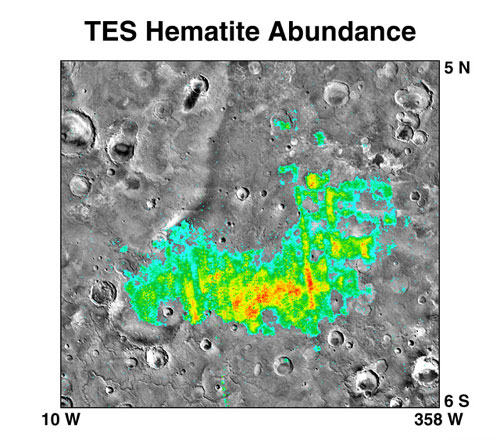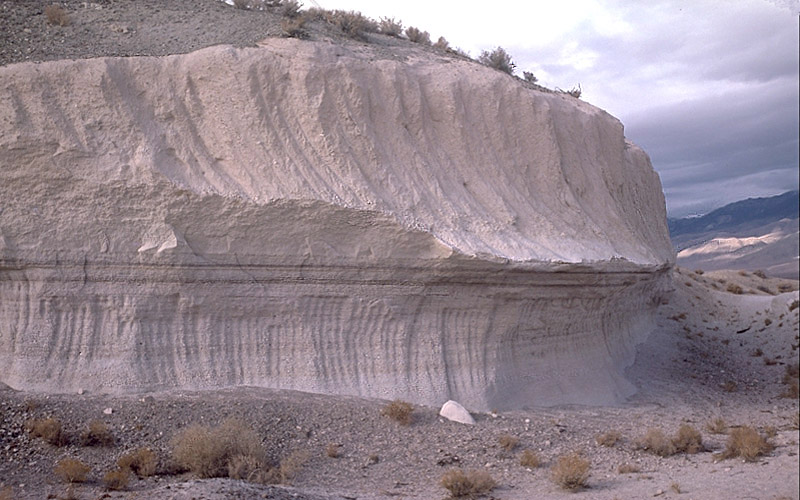|
Hebes Chasma
Hebes Chasma is an isolated chasma just north of the Valles Marineris canyon system of Mars. It is centered at 1 degree southern latitude and 76 degrees western longitude, just between the Martian equator and the Valles Marineris system, just east of the Tharsis region. Geography Hebes Chasma is a completely closed depression in the surface of Mars, with no outflows to the nearby Echus Chasma to the west, Perrotin Crater to the southwest, or Valles Marineris to the south. Its maximum extents are approximately 320 km east to west, 130 km north to south, and 5 to 6 km in depth. At the center of the depression is Hebes Mensa, a large mesa rising some 5 km off the valley floor, nearly as high as the surrounding terrain. This central plateau makes Hebes Chasma a unique valley in Martian geography. In high resolution pictures of Mars Express ( http://spaceinimages.esa.int/Images/2013/10/Hebes_Chasma ) blue areas at the deepest section of the depression show charac ... [...More Info...] [...Related Items...] OR: [Wikipedia] [Google] [Baidu] |
Hebes Chasma (10186743014)
Hebes Chasma is an isolated chasma just north of the Valles Marineris canyon system of Mars. It is centered at 1 degree southern latitude and 76 degrees western longitude, just between the Martian equator and the Valles Marineris system, just east of the Tharsis region. Geography Hebes Chasma is a completely closed depression in the surface of Mars, with no outflows to the nearby Echus Chasma to the west, Perrotin Crater to the southwest, or Valles Marineris to the south. Its maximum extents are approximately 320 km east to west, 130 km north to south, and 5 to 6 km in depth. At the center of the depression is Hebes Mensa, a large mesa rising some 5 km off the valley floor, nearly as high as the surrounding terrain. This central plateau makes Hebes Chasma a unique valley in Martian geography. History of name The word Hebes comes from Hebe (mythology), Hebe, the goddess of youth, who was the daughter of Zeus and Hera. Hebe was the wife of Hercules. Origin ... [...More Info...] [...Related Items...] OR: [Wikipedia] [Google] [Baidu] |
Thermal Emission Imaging System
The Thermal Emission Imaging System (THEMIS) is a camera on board the 2001 Mars Odyssey orbiter. It images Mars in the visible and infrared parts of the electromagnetic spectrum in order to determine the thermal properties of the surface and to refine the distribution of minerals on the surface of Mars as determined by the Thermal Emission Spectrometer (TES). Additionally, it helps scientists to understand how the mineralogy of Mars relates to its landforms, and it can be used to search for thermal hotspots in the Martian subsurface. THEMIS is managed from the Mars Space Flight Facility at Arizona State University and was built by the Santa Barbara Remote Sensing division of Raytheon Technologies Corporation, an American multinational conglomerate headquartered in Waltham, Massachusetts. The instrument is named after Themis, the goddess of justice in ancient Greek mythology. Infrared camera THEMIS detects thermal infrared energy emitted by the Martian surface at nine di ... [...More Info...] [...Related Items...] OR: [Wikipedia] [Google] [Baidu] |
Chasma
In planetary nomenclature, a chasma (''plural'': chasmata ) is a deep, elongated, steep-sided depression. As of 2020, the IAU has named 122 such features in the Solar System, on Venus (63), Mars (25), Saturn's satellites Mimas (6), Tethys (2), Dione (8) and Rhea (5), Uranus's satellites Ariel (7), Titania (2) and Oberon (1) and Pluto's satellite Charon (3). An example is Eos Chasma on Mars. Mars Below are images of some of the major chasmata of Mars. The map shows their relative locations. Interior layered deposits and sulfate Parts of the floor of Candor Chasma contains layered deposits that have been termed interior layered deposits (ILD's). These layers may have formed when the whole area was a giant lake. Some places on Mars contain hydrated sulfate deposits. Sulfate formation involves the presence of water. The European Space Agency's Mars Express found evidence of perhaps epsomite and kieserite. Scientists want to visit these areas with robotic rovers. Layers ... [...More Info...] [...Related Items...] OR: [Wikipedia] [Google] [Baidu] |
Valles Marineris
Valles Marineris (; Latin for ''Mariner program, Mariner Valleys'', named after the ''Mariner 9'' Mars orbiter of 1971–72 which discovered it) is a system of canyons that runs along the Mars, Martian surface east of the Tharsis region. At more than long, wide and up to deep, Valles Marineris is one of the largest List of largest rifts and valleys in the Solar System, canyons of the Solar System, surpassed in length only by the rift valleys of the mid-ocean ridge system of Earth. Valles Marineris is located along the equator of Mars, on the east side of the Tharsis Bulge, and stretches for nearly a quarter of the planet's circumference. The canyon system starts in the west with Noctis Labyrinthus; proceeding to the east are Tithonium Chasma, Tithonium and Ius Chasma, Ius chasmata, then Melas Chasma, Melas, Candor Chasma, Candor and Ophir Chasma, Ophir chasmata, then Coprates Chasma, then Ganges Chasma, Ganges, Capri Chasma, Capri and Eos Chasma, Eos chasmata; finally it emptie ... [...More Info...] [...Related Items...] OR: [Wikipedia] [Google] [Baidu] |
Mars
Mars is the fourth planet from the Sun and the second-smallest planet in the Solar System, only being larger than Mercury (planet), Mercury. In the English language, Mars is named for the Mars (mythology), Roman god of war. Mars is a terrestrial planet with a thin atmosphere (less than 1% that of Earth's), and has a crust primarily composed of elements similar to Earth's crust, as well as a core made of iron and nickel. Mars has surface features such as impact craters, valleys, dunes and polar ice caps. It has two small and irregularly shaped moons, Phobos (moon), Phobos and Deimos (moon), Deimos. Some of the most notable surface features on Mars include Olympus Mons, the largest volcano and List of tallest mountains in the Solar System, highest known mountain in the Solar System and Valles Marineris, one of the largest canyons in the Solar System. The North Polar Basin (Mars), Borealis basin in the Northern Hemisphere covers approximately 40% of the planet and may be a la ... [...More Info...] [...Related Items...] OR: [Wikipedia] [Google] [Baidu] |
Tharsis
Tharsis () is a vast volcanic plateau centered near the equator in the western hemisphere of Mars. The region is home to the largest volcanoes in the Solar System, including the three enormous shield volcanoes Arsia Mons, Pavonis Mons, and Ascraeus Mons, which are collectively known as the Tharsis Montes. The tallest volcano on the planet, Olympus Mons, is often associated with the Tharsis region but is actually located off the western edge of the plateau. The name Tharsis is the Greco-Latin transliteration of the biblical Tarshish, the land at the western extremity of the known world. Location and size Tharsis can have many meanings depending on historical and scientific context. The name is commonly used in a broad sense to represent a continent-sized region of anomalously elevated terrain centered just south of the equator around longitude 265°E.Carr, M.H. (2006). ''The Surface of Mars;'' Cambridge University Press: Cambridge, UK, p. 46. . Called the Tharsis bulge or Thar ... [...More Info...] [...Related Items...] OR: [Wikipedia] [Google] [Baidu] |
Echus Chasma
Echus Chasma is a chasma in the Lunae Planum high plateau north of the Valles Marineris canyon system of Mars. It is in the Coprates quadrangle.ESA (2008-07-14). Echus Chasma. Retrieved on 2008-07-15 from http://www.esa.int/esaSC/SEM4CATHKHF_index_0.html. Clay has been found within it, meaning that water once sat there for a time. It may have been one of the many lakes that have been advanced for the Martian past. Research from 2010 suggests that Mars had lakes along parts of the equator, which is where Echus Chasma lies. Although earlier research had showed that Mars had a warm and wet early history that has long since dried up, these lakes existed in the Hesperian Epoch, a much later period. Using detailed images from NASA's Mars Reconnaissance Orbiter, the researchers speculate that there may have been increased volcanic activity, meteorite impacts or shifts in Mars' orbit during this period to warm Mars' atmosphere enough to melt the abundant ice present in the ground. Volca ... [...More Info...] [...Related Items...] OR: [Wikipedia] [Google] [Baidu] |
Hebes Mensa
Hebes Mensa is a large mensa that rises from the floor of Hebes Chasma, one of the chasmata of the Valles Marineris network on Mars. Some researchers have identified this mesa to be an interior layered deposit (ILD), similar to Ganges Mensa, and are named for alternating light-toned and dark-toned layers forming a stair-stepped stratigraphy. The faces of Hebes Mensa are sometimes fluted. It is tall and wide. Observation history Hebes Mensa was first named in 1982. Context Hebes Mensa is located within the Hebes Chasma of Valles Marineris, within the Coprates quadrangle. To its east is Juventae Dorsa and the larger Lunae Planum, and to its south is Perrotin Crater and the main body of Valles Marineris (specifically Ophir Chasma). To its west are Tithoniae Fossae and Echus Chasma, the latter of which continues north of Hebes Mensa into the Lunae Palus quadrangle. Also to the north is Echus Fossae. As Hebes Mensa is part of Valles Marineris, many features which are ... [...More Info...] [...Related Items...] OR: [Wikipedia] [Google] [Baidu] |
Mesa
A mesa is an isolated, flat-topped elevation, ridge or hill, which is bounded from all sides by steep escarpments and stands distinctly above a surrounding plain. Mesas characteristically consist of flat-lying soft sedimentary rocks capped by a more resistant layer or layers of harder rock, e.g. shales overlain by sandstones. The resistant layer acts as a caprock that forms the flat summit of a mesa. The caprock can consist of either sedimentary rocks such as sandstone and limestone; dissected lava flows; or a deeply eroded duricrust. Unlike ''plateau'', whose usage does not imply horizontal layers of bedrock, e.g. Tibetan Plateau, the term ''mesa'' applies exclusively to the landforms built of flat-lying strata. Instead, flat-topped plateaus are specifically known as '' tablelands''.Duszyński, F., Migoń, P. and Strzelecki, M.C., 2019. ''Escarpment retreat in sedimentary tablelands and cuesta landscapes–Landforms, mechanisms and patterns.'' ''Earth-Science Reviews, no. ... [...More Info...] [...Related Items...] OR: [Wikipedia] [Google] [Baidu] |
Hebe (mythology)
Hebe (; grc-gre, Ἥβη), in ancient Greek religion and mythology, is the goddess of youth or the prime of life. She is the beautiful daughter of Zeus and his wife, Hera. Hebe was the cupbearer for the gods and goddesses of Mount Olympus, serving their nectar and ambrosia until she married Heracles (Roman equivalent: Hercules); her successor was the divine hero Ganymede. Another title of hers for this reason is ''Ganymeda'', meaning "Gladdening Princess". Hebe was worshipped as the goddess of forgiveness or mercy at Sicyon. Hebe had influence over eternal youth and the ability to restore youth to mortals, a power that appears exclusive to her, as in Ovid's ''Metamorphoses'', some gods lament their favoured mortals aging. According to Philostratus the Elder, Hebe was the youngest of the gods. She was responsible for keeping them eternally young, and thus was the most revered by them. Her role of ensuring the eternal youth of the other gods is appropriate with her role o ... [...More Info...] [...Related Items...] OR: [Wikipedia] [Google] [Baidu] |







